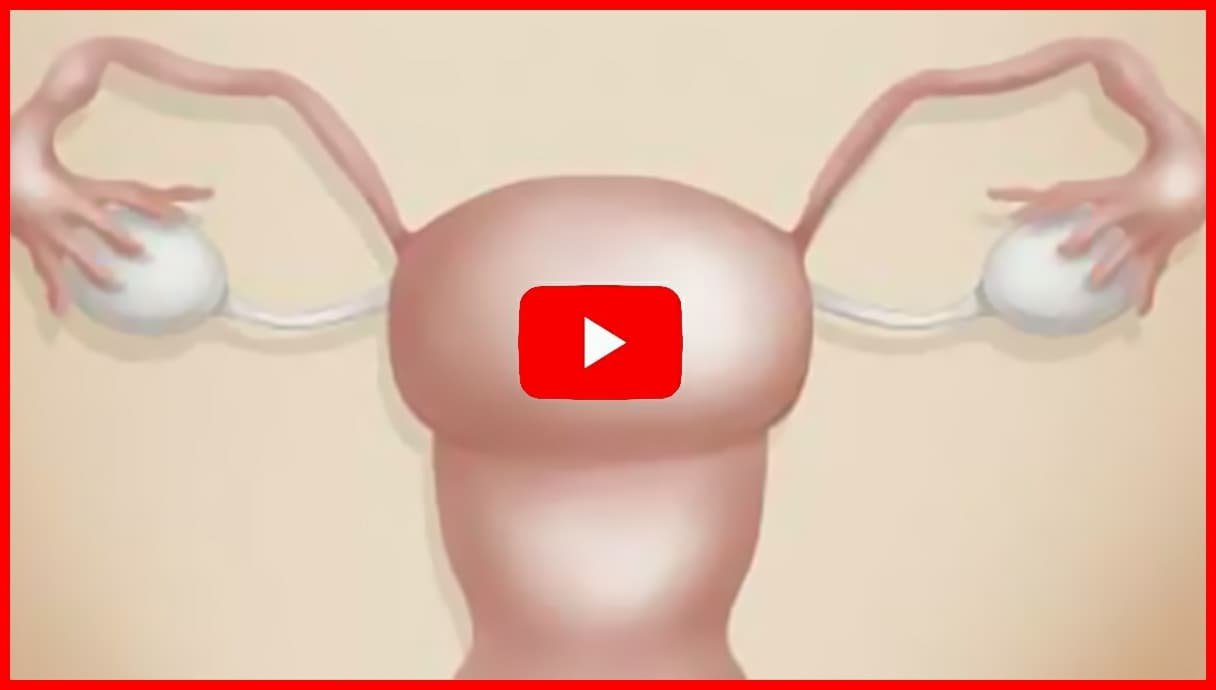Fertility Awareness Methods: Understanding Your Body’s Natural Rhythm
In a world filled with pills, injections, and high-tech interventions, sometimes the simplest solutions come from listening to our own bodies. Fertility awareness methods (FAM)—also known as natural family planning—offer women (and couples) a science-backed way to either achieve or avoid pregnancy without relying on external devices or hormones.
Rather than suppressing or bypassing the menstrual cycle, these methods lean into it, decoding the body’s natural signs to reveal when fertility peaks and when it dips. The result? A deeper connection with reproductive health and the ability to make informed, intentional choices about family planning.
How Fertility Awareness Methods Work
At their core, FAM techniques revolve around observing and recording the physical changes that occur throughout a woman’s cycle. By tracking these signs consistently, women gain insights into their fertile and infertile phases.
The key indicators include:
-
Basal body temperature (BBT)
-
Cervical mucus changes
-
Cervical position and firmness
When combined, these signs create a reliable picture of fertility patterns—empowering women to plan or prevent pregnancy naturally.
Basal Body Temperature (BBT): The Subtle Shift That Speaks Volumes
Every morning before stepping out of bed, a woman can take her basal body temperature using a highly sensitive thermometer. For most of the cycle, temperatures stay relatively low. But right after ovulation, something fascinating happens: the body temperature rises slightly—about 0.2 to 0.5°F—and stays elevated until the next period.
This small but consistent shift tells an important story: ovulation has occurred. Over time, charting BBT reveals patterns that can predict fertile windows, making it one of the most powerful tools for fertility awareness.
Cervical Mucus: Nature’s Fertility Signal
If BBT provides confirmation, cervical mucus offers a real-time fertility forecast. Throughout the cycle, cervical mucus undergoes remarkable transformations:
-
Fertile phase: Clear, stretchy, and slippery (like raw egg whites)—perfect for helping sperm survive and swim.
-
Non-fertile phases: Scant, sticky, or cloudy—far less hospitable to sperm.
By paying attention to these changes, women can pinpoint their most fertile days with surprising accuracy. It’s nature’s own signal system, hiding in plain sight.
Cervical Position and Firmness: The Final Clue
For those seeking even more precision, the cervix itself provides additional information. During fertile days, it rises higher, softens, and opens slightly. During infertile times, it sits lower, feels firmer, and closes.
Learning to detect these subtle shifts takes practice, but when combined with BBT and mucus observations, it offers another layer of confidence in tracking fertility.
Effectiveness and Benefits of Fertility Awareness Methods
When practiced diligently and correctly, FAM can be remarkably effective—comparable to many modern contraceptives. But its benefits extend far beyond family planning:
-
For contraception: Provides a natural, hormone-free option.
-
For conception: Helps identify the most fertile days for trying.
-
For health monitoring: Detects irregular cycles, unusual temperature shifts, or abnormal mucus patterns that may indicate underlying health issues.
Perhaps most importantly, these methods foster body awareness, empowering women to understand and trust their natural rhythms.
Education, Tools, and Support
Success with fertility awareness doesn’t come overnight. It requires consistency, patience, and proper education. Many women benefit from guidance by certified fertility awareness instructors or healthcare professionals who can help with charting and interpretation.
Today, digital tools—like fertility apps and charting platforms—make it easier than ever to track data and recognize patterns. Over time, what once felt overwhelming becomes second nature.
Conclusion: A Natural Path to Empowerment
Fertility Awareness Methods are not just about preventing or achieving pregnancy—they’re about reclaiming agency over reproductive health. By listening to the body’s signals and respecting its natural cycles, women gain insight, confidence, and freedom.
Whether used as contraception, a roadmap to conception, or simply a way to stay in tune with one’s body, these methods prove that sometimes the most powerful answers are the ones written into us all along.
Age and Fertility
Age is one of the most powerful forces shaping a woman’s fertility. From the first menstrual cycles in adolescence to the final transition of menopause, the body’s reproductive capacity shifts in ways both subtle and profound. For women planning families, considering fertility preservation, or simply wanting to safeguard their reproductive health, understanding how age influences conception is essential. Fertility doesn’t suddenly vanish at a specific birthday; rather, it declines in stages—starting gently in the late twenties or early thirties, then accelerating noticeably after age 35. This makes age not just a number, but a pivotal factor in reproductive planning.
Fertility in the Early Years (Teens to Twenties)
In the late teens and twenties, fertility is generally at its prime. Ovulation tends to be regular, egg quality is high, and pregnancy complications are relatively rare. Conception during this time is usually straightforward. Yet, this natural advantage isn’t invincible. Poor diet, chronic stress, smoking, heavy drinking, or even prolonged exposure to toxins can chip away at fertility potential. For women in this stage, maintaining balance—through nourishing food, consistent movement, stress management, and avoidance of harmful habits—helps preserve both short- and long-term reproductive health.
Entering the Thirties: A Gentle Decline
As women move into their thirties, fertility begins its slow shift. Egg quantity starts to dip, and quality follows suit. This doesn’t mean pregnancy becomes impossible—far from it. Many women in their early thirties still conceive naturally and carry healthy pregnancies. However, the process may take longer, and miscarriage risk rises modestly. Being aware of these changes is empowering. Early fertility assessments, routine gynecological care, and intentional lifestyle choices can make a significant difference in preserving reproductive potential during this decade.
After 35: The Turning Point
By age 35, fertility decline becomes steeper. Eggs diminish not only in number but also in genetic stability, raising the risk of miscarriage and chromosomal abnormalities. Conception can take more time, and medical interventions—like intrauterine insemination (IUI) or in vitro fertilization (IVF)—become common pathways to pregnancy. For women trying to conceive at this stage, it’s wise to seek guidance sooner rather than later. Specialists often recommend evaluation after six months of trying, since timely action can open doors to better outcomes.
The Late Thirties and Early Forties: A Steeper Drop
Between the late thirties and early forties, fertility continues its accelerated decline. Egg reserves wane, conception becomes harder, and pregnancy risks rise—ranging from gestational diabetes and high blood pressure to genetic concerns like Down syndrome. While natural conception is still possible, it often requires patience, persistence, and sometimes medical support. For many, assisted reproductive options such as egg donation become part of the conversation. At this stage, caring for overall health—staying active, maintaining a healthy weight, and managing chronic conditions—remains just as critical as fertility-specific choices.
Menopause: The Natural Conclusion
Menopause, which usually arrives between ages 45 and 55, marks the end of natural fertility. With ovulation and menstruation ceasing, pregnancy without medical intervention becomes impossible. For women wishing to conceive beyond this stage, assisted reproductive technologies—like donor eggs with IVF—are the only viable route.
The Takeaway
Age and fertility are inseparably linked. While fertility naturally declines, informed choices—such as considering egg freezing, planning pregnancies earlier, or staying proactive about health—can help women align their reproductive goals with biological realities. Conversations with healthcare providers early on allow women to chart their own course with clarity, confidence, and care.
🏆 NuviaLab Female Fertility is a 19-ingredient food supplement that is a natural support for female fertility. The product is formulated with the highest quality plant extracts, vitamins and minerals to support female reproductive health.
🏆 Regular use of NuviaLab Female Fertility helps to maintain normal fertility and also supports the maintenance of natural sexual activity. The product plays an important role in the cell division process and reduces feelings of fatigue and tiredness. NuviaLab Female Fertility is the ideal solution for the modern woman.
Fertility by Age
Fertility isn’t a static quality—it shifts, bends, and transforms with time. It reflects not just biology but also the emotional and social realities that shape a woman’s reproductive journey. At every age, fertility carries unique opportunities and challenges, requiring different approaches to health, family planning, and decision-making. By understanding how fertility changes through life’s stages, women and their partners can plan ahead, seek the right medical support, and move through the often emotional terrain of reproductive choices with clarity.
Adolescence & Early Adulthood: Fertility at Its Peak
In the teenage years and early twenties, fertility is usually at its highest. Ovulation tends to be regular, egg quality is strong, and chances of conceiving are maximized. But this stage isn’t just about biological readiness—it’s also about laying down the groundwork for long-term reproductive health. Balanced nutrition, avoiding harmful substances like smoking or heavy drinking, and scheduling routine health checkups all build a foundation that supports future fertility. This is also a critical time for education: understanding how menstrual cycles work, recognizing signs of reproductive issues, and developing healthy habits that will echo through later decades.
The Twenties: The Ideal Window
The late teens and twenties are often considered the “golden window” for conception. Egg quality and ovarian reserve are at their best, and pregnancy-related health risks are at their lowest. Still, fertility isn’t immune to influences at this stage. Genetic predispositions, preexisting health conditions, or lifestyle factors can all affect outcomes. For women who want to delay pregnancy due to personal goals, career development, or health reasons, this is an ideal time to explore fertility preservation options such as egg freezing. Early conversations with healthcare professionals can provide personalized guidance and peace of mind.
The Thirties: A Gradual Shift
Once women enter their thirties, fertility begins its slow but steady decline. Both the number of eggs and their quality diminish, which can lengthen the time it takes to conceive and raise the chances of miscarriage or chromosomal abnormalities. That said, many women in their early thirties still conceive naturally without significant challenges. What becomes increasingly important during this stage is proactive reproductive care: scheduling regular gynecological exams, getting fertility assessments when needed, and continuing to prioritize a healthy lifestyle. It’s also a crucial time to think about family planning more deliberately, especially for those considering pregnancy later in life.
Mid to Late Thirties: Accelerated Decline
Around age 35 and beyond, fertility decline accelerates. Natural conception becomes more difficult, and pregnancy-related risks rise. Fertility treatments such as IVF or egg donation often become part of the conversation. The emotional weight of these challenges shouldn’t be overlooked—many women benefit from counseling or support groups as they navigate the stress of trying to conceive. Open communication with healthcare providers is key, as is exploring all available reproductive options. For those still considering delaying pregnancy, fertility preservation becomes an urgent consideration rather than a long-term plan.
The Forties: Shifting the Focus
By the time women reach their forties, natural conception is uncommon. Assisted reproductive technologies, especially IVF with donor eggs, provide the highest chances of success. Pregnancy in this stage carries more risks—gestational diabetes, hypertension, and complications for both mother and baby are more frequent. That makes overall health maintenance absolutely critical. Regular screenings, effective management of chronic conditions, and healthy lifestyle practices can improve outcomes. At this stage, fertility choices are as much about health and safety as they are about conception itself.
Final Thoughts
Fertility evolves with age, weaving together biology, lifestyle, and personal choices. While natural fertility gradually fades, informed planning and modern medical options empower women to align their reproductive goals with their stage of life. Whether through early preparation, fertility preservation, or assisted technologies, understanding the natural rhythm of fertility allows women to approach each decade with both confidence and compassion for themselves.
🏆 NuviaLab Female Fertility is a 19-ingredient food supplement that is a natural support for female fertility. The product is formulated with the highest quality plant extracts, vitamins and minerals to support female reproductive health.
🏆 Regular use of NuviaLab Female Fertility helps to maintain normal fertility and also supports the maintenance of natural sexual activity. The product plays an important role in the cell division process and reduces feelings of fatigue and tiredness. NuviaLab Female Fertility is the ideal solution for the modern woman.









Right now it appears like Movable Type is the best blogging
platform available right now. (from what I’ve read) Is that
what you’re using on your blog?